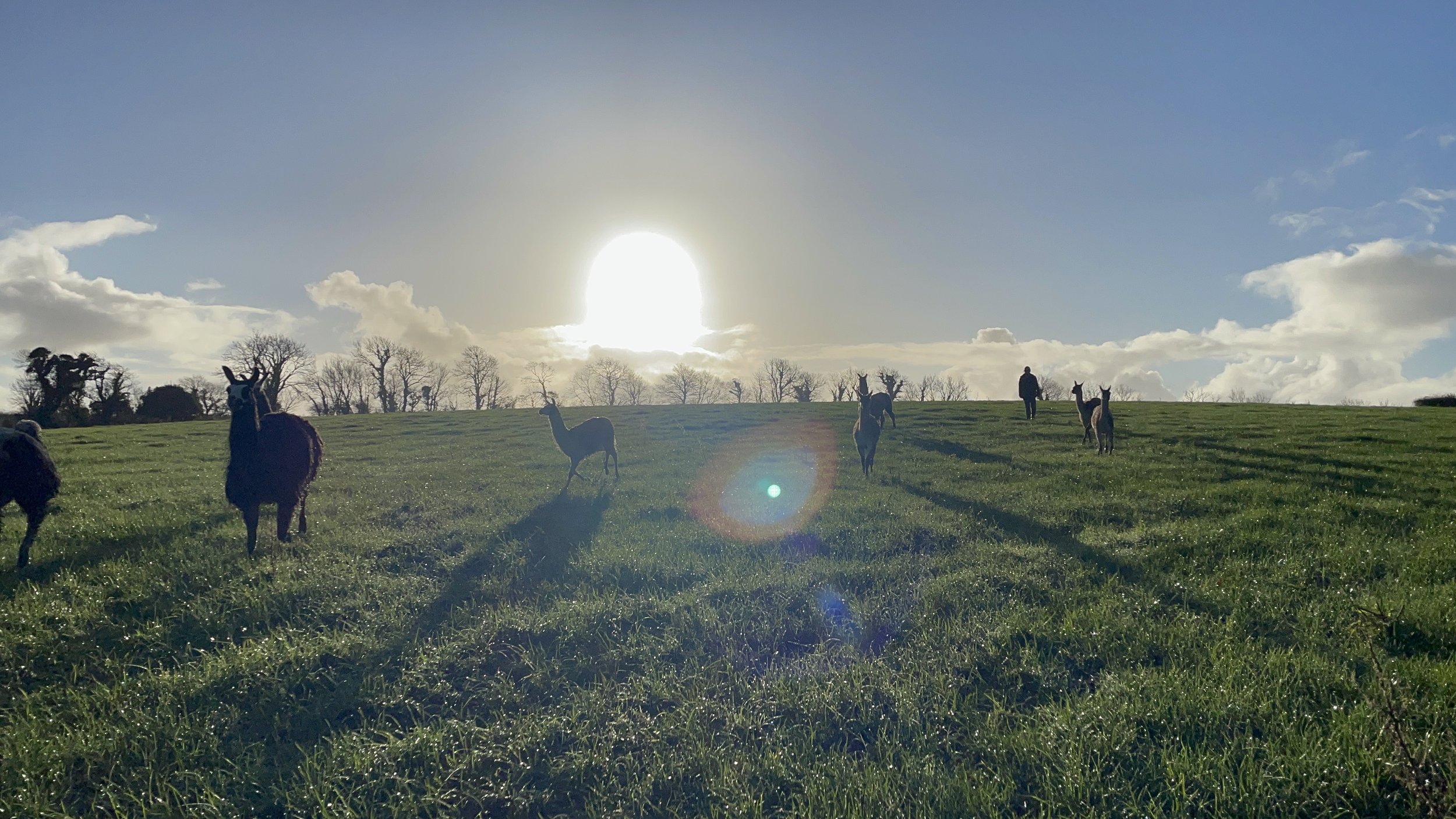
Keeping Llamas
We do not sell llamas
As a sanctuary, we do not sell llamas.
We do not breed llamas, and do not feel comfortable selling any animal to make a profit.
Minimum number of llamas
If you are planning to live with llamas, note that you will need to keep at least two llamas at a minimum - three ideally. They are herd animals and do not do well on their own. We are very skeptical of claims from people who keep llamas with alpacas / donkeys / horses / sheep / pigs / whatever who say ‘they get on great!’. While this may be true, they need other members of their own species to really prosper.
Whilst you will need 2/3 llamas at a minimum, we have noted from our experiences that llamas become more confident and prosper in larger numbers. Between 6-10 is the ideal minimum in our personal view.
How much space do I need to keep llamas?
This depends on many factors.
A ‘large back garden’ is completely unsuitable for llamas. Whilst this may be common sense to many, we have seen this terminology used on several occasions by individuals who were considering keeping llamas.
We would recommend several acres minimum. Whilst it is commonly said that 4 llamas can be kept on an acre, this does not take into account stock rotation i.e. where are you going to put your llamas once they have eaten all the grass in the field? (and they will do this quickly).
You need at least a second field to move them to, to allow the first field to recover, for the grass to grow back, and for the parasite load (from llama waste) to drop over time.
We would recommend at least a three field rotation, of at least an acre each, to allow adequate grazing and time for the pasture to recover. And this does not take into account one of the golden rules of farming:
Not all land is equal
A north facing 45 degree slope will not offer the same grazing opportunities as a flat, well drained field with good exposure to southern sun. Consider your soil type also. Heavy clay takes a long time to drain in the winter, which means that large animals like llamas will churn up the field very quickly and turn it into a bog. This will result in very little grass growing, and there will be very little for your llamas to eat.
Also take into account that unless you have vast hectares of grazing, you will very likely need to supplement your llamas feed for around 6 months of the year in the UK with hay, since it will be too cold for grass to grow, or it won’t grow quickly enough. The cost of daily hay feeding adds up rapidly so keep this in mind when considering your budget for keeping llamas.
Do not keep girl and boy llamas together
Do not breed llamas unless you have facilities to keep them separate at all times
Male llamas will attempt to breed with female llamas regularly if they are kept in the same enclosure. Even neutered males will attempt to breed with females. Some llama keepers have been known to keep both sexes together and will claim to have never seen their male(s) attempt to mate with the females. This is because they tend to do it in the middle of the night when their owner is asleep.
Without going into detail, the nature of male llama reproductive anatomy can do serious internal damage to female llamas with repeat breedings, to the point of making them infertile or causing serious health issues, possibly death.
If you are planning on keeping both sexes together permanently, you are being irresponsible and endangering your females lives. Whether your llamas will be neutered or not is besides the point.
If you do have adequate facilities to house your males and females separately for most of the time (asides from controlled supervised matings), then you should also consider how you will house any potential offspring - given that father llamas will at some point take an interest in their daughters, and sons will at some point start taking an interest in their mothers. They will need to be housed separately in order to negate any inbreeding.
Bovine TB
If you are new to keeping livestock, research the impact of Bovine TB before acquiring any llamas. This deadly disease can and does impact llamas, particularly in southern and western Britain. Once one llama is infected, it can spread rapidly through the entire herd due to the camelid inclination to spit at each other whilst feeding. A llama with a positive bTB reading has to be culled under UK law, and your land will be placed under movement restriction. This is a complex, frustrating topic. We hope to provide more llama-sepcific information here soon. In the meantime, see tbhub.co.uk for more information.